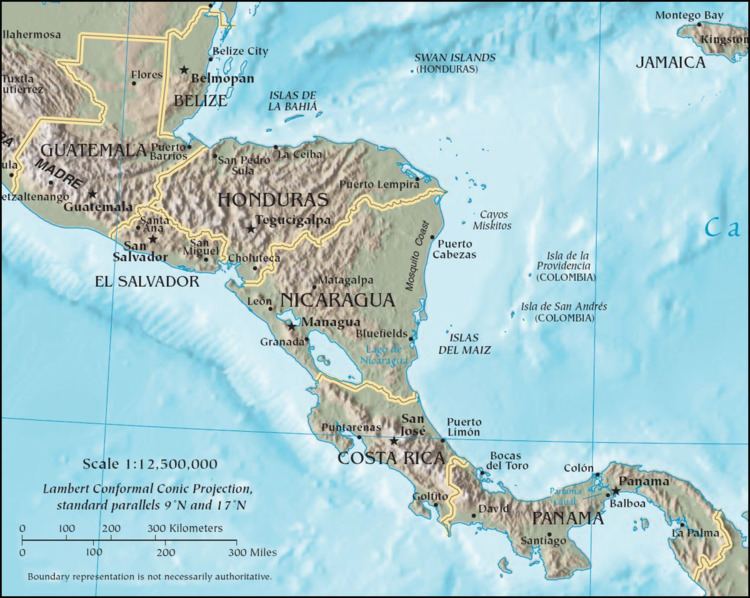 | ||
The Central American crisis was in the late 1970s, when major civil wars and pro-communist revolutions erupted in various countries in Central America, resulting in it becoming the number one region among foreign policy hot spots in the 1980s. In particular, the United States feared that victory by communist forces would threaten the Panama Canal and would isolate the rest of South America from the United States if the countries of Central America were to be installed with pro-soviet communist governments.
Contents
El Salvador
Fought between the military-led government of El Salvador and the Farabundo Martí National Liberation Front (FMLN), a coalition or umbrella organization of five left-wing militias. Over the course of the 1970s, significant tensions and violence had already existed, before the civil war's full outbreak.
The United States supported the Salvadoran military government. Israel also actively supported the government forces. The conflict ended in the early 1990s. Between 75,000 and 90,000 people were killed during the war, mostly by the military.
Guatemala
Guatemala's civil war began in 1960, but the army and death squads appeared to have contained it. However, Guatemala also saw an increase in violence in the late 1970s, marked by the 1978 Panzós massacre. In 1982 the resurgent guerrilla groups united in the Guatemalan National Revolutionary Unity. The presidency of Efraín Ríos Montt (1982-1983), during which he implemented a strategy he called "beans and bullets", is widely considered the war's turning point. The Guatemalan government and the severely weakened guerrillas signed a peace agreement in December 1996, ending the war.
Honduras
In Honduras, efforts to establish guerrilla movements foundered on the generally conservative attitude of the population. Nevertheless, fears that the civil wars wracking its neighbors might spread to the country led to the killings and disappearances of leftists, spearheaded by the army's Battalion 316. Relatively stable Honduras became a key base for the Reagan administration's response to the crisis. U.S. troops held large military exercises in Honduras during the 1980s, and trained thousands of Salvadorans in the country. The nation also hosted bases for the Nicaraguan Contras.
United States response
Peace efforts
Several Latin American nations formed the Contadora Group to work for a resolution to the region's wars. Later, Costa Rican President Óscar Arias succeeded in convincing the other Central American leaders to sign the Esquipulas Peace Agreement, which eventually provided the framework for ending the civil wars.
